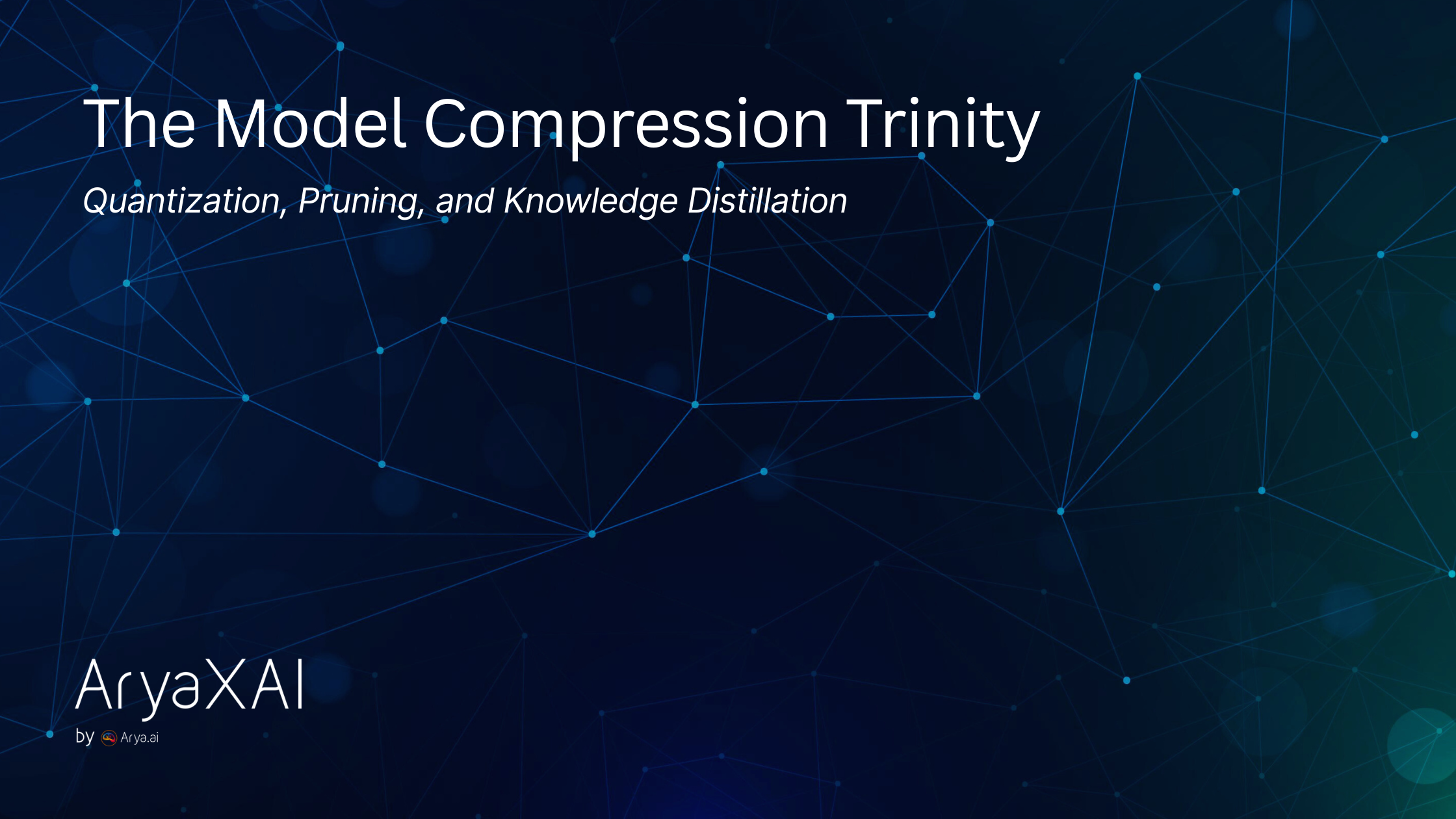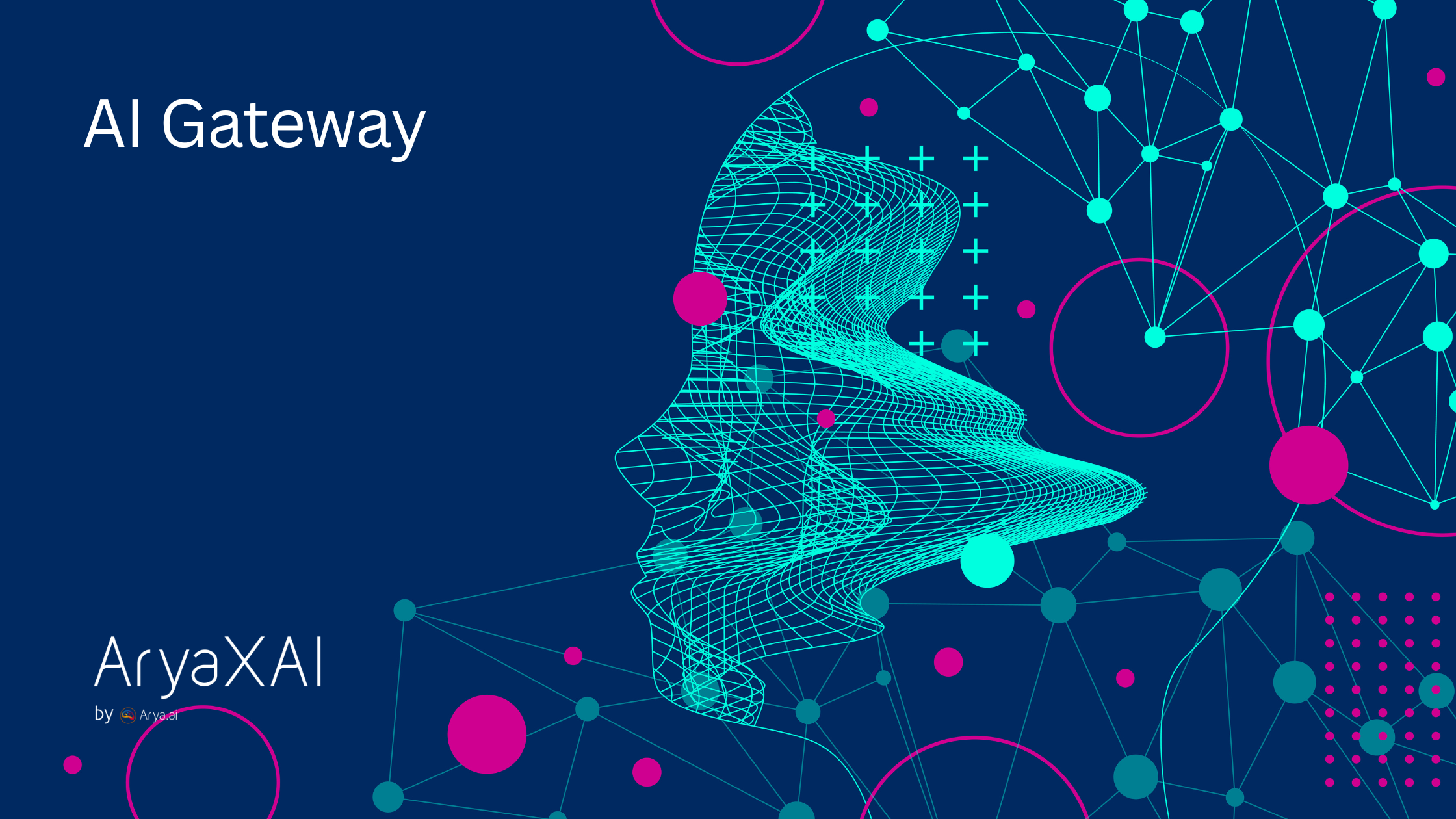Why is AI Inference Optimization Critical?
October 23, 2025

Why Lean AI Engineering Defines the Future of Agentic Systems?
The age of "brute-force" Large Language Models (LLMs) is ceding ground to the era of Lean AI Engineering. As Agentic AI systems and complex deep learning models are deployed into mission-critical production, the strategic objective is no longer merely size, but efficiency and trustworthiness. We must seamlessly integrate high accuracy with stringent demands for ultra-low inference latency, minimized memory footprint, and dramatically reduced energy consumption, the foundations of sustainable AI inference.
This guide establishes the Model Compression Trinity - Quantization, Pruning, and Knowledge Distillation, as the essential technical mandate for MLOps and Responsible AI. For teams navigating stringent AI Governance and LLM Interpretability requirements, optimization is the core of reliable, auditable AI deployment.
What is the AI Inference Bottleneck and Why is it the Main Enterprise AI Cost Driver?
The Operational Reality: Training vs. Inference
Before diving into compression, we must clearly define the operational cycle.
- What is Model Training: The resource-intensive phase of learning patterns, where weights are adjusted across vast datasets to minimize a loss function. This phase is characterized by write operations (adjusting weights) and high power consumption.
- What is AI Inference: The operational, value-generating phase where the trained model is frozen and used for read operations to make predictions or decisions on new, unseen data. This phase is constrained by real-time requirements: latency, throughput, and cost.
The Computational Strain: The Case for Lean AI
Modern deep learning architectures (e.g., Transformer models) contain up to trillions of FP32 parameters. During high-volume real-time inference, the sheer number of necessary floating-point matrix multiplications creates the severe AI Inference Bottleneck, leading to:
- Latency: Increased FLOPs (Floating Point Operations per Second) translate directly to slower response times, making the model unusable for time-sensitive mission-critical AI (e.g., autonomous decision-making).
- TCO (Total Cost of Ownership): Large models saturate costly GPU memory and data bus bandwidth, drastically increasing AI inference cost and operational expenditure.
- Sustainability: The cumulative energy demand of these large models violates the principles of green AI inference and ESG mandates, necessitating a focus on efficiency.
Thus to achieve scalable, high-volume AI deployment, AI Engineering must implement compression techniques to decouple the model's theoretical complexity from its execution runtime.
How Does Quantization Achieve Ultra-Low Inference Latency for Edge AI?
Quantization is the strategic reduction of numerical precision in a model’s parameters and activations. It is the most direct method to reduce model size and accelerate processing.
The Technical Mechanism of FP32 to INT8 Mapping
The standard process maps 32-bit floating-point (FP32), which consumes 4 bytes per number, down to 8-bit integer (INT8), requiring only 1 byte. This yields an immediate 4x reduction in memory footprint and bandwidth needs.
- Hardware Acceleration: Specialized AI inference hardware - such as NVIDIA TensorRT, Intel OpenVINO, and dedicated NPUs for Edge AI—is specifically optimized for efficient INT8 arithmetic. This shift from demanding floating-point operations to fast integer operations is the primary driver of ultra-low inference latency and maximized throughput.
- Deployment Strategy: Quantization can be implemented Post-Training (PTQ) using a small calibration set, or Quantization-Aware Training (QAT) where quantization is simulated during training for maximum accuracy retention.
Quantization introduces small numerical errors. For AI Governance, teams must implement rigorous post-quantization validation to ensure that the lower-precision space does not compromise the model's decision-making integrity or audit trail. Preserving LLM Interpretability after this numerical transformation is mandatory for regulatory compliance.
What are the Different Types of Pruning Techniques and How Do They Improve Agent Observability?
Pruning identifies and permanently excises redundant weights, neurons, or channels from the network structure, resulting in a sparse neural network that is faster to execute.
Strategic Pruning Types for AI Engineering
Pruning methods are categorized by what they remove, which determines their suitability for hardware acceleration:
- Structured Pruning: Removes entire functional units (e.g., whole neurons, attention heads, or convolutional filters). This creates a regular, dense structure in the remaining model, which is easily accelerated by commodity hardware (GPUs/CPUs). Structured Pruning is preferred for robust MLOps deployment.
- Unstructured Pruning: Removes individual weights based on magnitude. While achieving the highest model size reduction, the resulting sparse matrix requires specialized sparse matrix acceleration kernels and hardware to translate sparsity into actual latency gains.
- Mechanism (Iterative Pruning): The most effective approach is Iterative Pruning, where the model is pruned, retrained (fine-tuned) to recover accuracy, and pruned again until the desired density or latency target is met.
Pruning creates a more streamlined computation graph, which directly simplifies AI Explainability (XAI) metrics. For complex Agentic AI systems, a simpler model reduces the volume and complexity of telemetry data required, easing the burden on Agent Observability systems monitoring for model drift and agent risk in real-time.
How is Knowledge Distillation Used to Achieve LLM Alignment and Reduce LLM Risks?
Knowledge Distillation (KD) is a powerful transfer learning technique that transfers the complex "knowledge" of a massive Teacher Model (T) into a smaller, faster Student Model (S) with high performance retention.
The Mechanism of Soft Targets and Temperature Smoothing
The Student Model is trained to mimic the Teacher's soft targets (logits)—the raw, smoothed output scores that convey the teacher's certainty and relationship between classes. This is achieved by introducing a Temperature (T) hyperparameter to soften the Teacher's probability distribution:
- T: The Temperature increases the entropy of the probability distribution, revealing the relationships the Teacher Model learned between similar classes.
- Strategic Impact: KD is instrumental in creating lightweight, domain-specific LLM alignment models (e.g., deploying DistilBERT) that retain high accuracy but run significantly faster and cheaper.
AI Governance and Risk Mitigation
KD offers a controlled avenue for Responsible AI. The smaller student model can be selectively retrained and fine-tuned to remove specific LLM Risks (e.g., deep-seated biases or prohibited patterns) inherited from the large, opaque foundational model (the teacher), ensuring a clean, controlled system for auditable AI deployment.
The Synergy: Why Combining All Three is Key to AI Engineering Success
The maximum efficiency gain is realized when Distillation, Pruning, and Quantization are deployed in a cohesive sequence within the MLOps pipeline. This mandatory synergy defines the core competency of modern AI Engineering, enabling high-performance sustainable AI inference and robust auditable AI operations in all Agentic AI systems.
Optimized AI Inference and Model Compression FAQ
What is Model Quantization, and how does it directly reduce AI Inference Cost?
Model Quantization reduces the numerical precision of model parameters (e.g., from 32-bit floating-point to 8-bit integer). This process directly cuts AI Inference Cost in two ways: it reduces the memory footprint by up to 75% and, more importantly, it enables specialized hardware (like NPUs and TensorRT) to perform faster, more energy-efficient integer math, significantly increasing throughput while consuming less power.
How does Knowledge Distillation enable LLM Alignment and reduce LLM Risks?
Knowledge Distillation enables LLM Alignment by transferring the complex knowledge of a massive, biased Teacher Model to a smaller Student Model. This Student Model can then be easily fine-tuned and verified against ethical constraints and specific user goals, effectively removing or mitigating LLM Risks and unwanted biases inherited from the foundational model before AI deployment.
Pruning creates sparsity. How do AI Engineering teams ensure this translates to low latency?
Pruning creates a sparse model, but low latency is only guaranteed if AI Engineering teams use Structured Pruning. This technique removes entire groups of neurons or channels, resulting in a model structure that remains dense and regular. This dense structure can be efficiently processed and accelerated by standard GPU/CPU tensor kernels without requiring specialized hardware for sparse matrix acceleration.
How is Model Compression validated to ensure AI Governance and XAI Compliance are maintained?
Compliance requires continuous Model Monitoring and specialized XAI tools. Post-compression validation involves running the model against adversarial and validation datasets to detect any accuracy degradation or bias amplification. AI Governance mandates the use of Traceability tools (like DLBacktrace) to ensure the compressed model’s decision-making logic remains fully auditable and explainable in real-time.
Why is Ultra-low Inference Latency the single most critical factor for Agentic AI systems?
Ultra-low Inference Latency is essential for Agentic AI because agents must operate within a planning-and-acting loop. Any significant delay (latency) during the inference step breaks the agent’s ability to perceive, reason, and act in real-time, leading to failures in task completion, coordination issues in multi-agent systems, and a breakdown of their autonomy.
What is the most reliable way to monitor a compressed model's performance in MLOps?
The most reliable way is through Agent Observability systems that track end-to-end task metrics (like Tool Selection Accuracy and Task Success Rate) rather than just simple model accuracy. These systems monitor the live inference workflow for deviations, ensuring the highly optimized, compressed model is performing reliably in its operational environment.
SHARE THIS
Discover More Articles
Explore a curated collection of in-depth articles covering the latest advancements, insights, and trends in AI, MLOps, governance, and more. Stay informed with expert analyses, thought leadership, and actionable knowledge to drive innovation in your field.

Is Explainability critical for your AI solutions?
Schedule a demo with our team to understand how AryaXAI can make your mission-critical 'AI' acceptable and aligned with all your stakeholders.



.png)



















